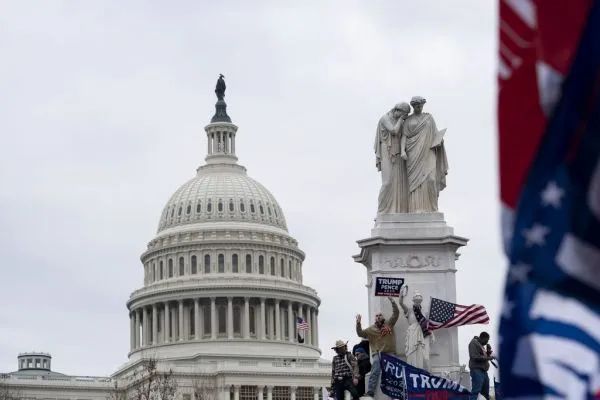The Associated Press published a report on January 6 that took stock of the violence in the 220 years of the U.S. Capitol. The full text is excerpted as follows:
In more than 220 years, the U.S. Capitol has never seen this happen: a group of noisy demonstrators forcibly crossed the marble column, disrupted the transfer of power, and violently hit the center of the country.
But this is by no means the first time that the Capitol has been harmed by violence.
In 1814, only 14 years after the building was opened, British troops in the War of 1812 tried to burn it. The invaders first sacked the Capitol, then set fire to the north and south flanks – lighting the Library of Congress. According to architect Benjamin Henry Latrobe, a sudden torrential rain prevented it from being completely burned down, but left “the most spectacular ruins” of the Capitol.
Over the centuries since, events have mocked the inscription on the House podium – “Unity, Justice, Tolerance, Freedom, Peace”. The building has been bombed several times and there have been shootings. One congressman almost killed another congressman.
The most famous event occurred in 1954, when four Puerto Rican nationalists raised the flag of the island, shouted “Puerto Rico Freedom” and fired about 30 consecutive shots from the auditorium of the House of Representatives. Five members of Congress were injured, one of whom was seriously injured.
Leading Loretta LeBlanc shouted at the arrest of others: “I’m not here to kill, I’m here to die for Puerto Rico!”
Before and after that, the Capitol was the target of the attack. In 1915, a German man put three detonators in the Senate living room; the explosion occurred on the eve of midnight, when no one was around.
The bomber committed suicide before being arrested. He poisoned and killed his pregnant wife in advance. He planned to continue to shoot the financier J.P. Morgan Jr. and blow up a steamboat full of ammunition for Britain.
Later, Underground Weathermen set up explosives in the Capitol in 1971 to protest against the bombing of Laos by the United States. Protesters against the U.S. invasion of Grenada caused an explosion in the Senate in 1983. Neither incident resulted in casualties, but both caused hundreds of thousands of dollars in damage and prompted the Capitol to strengthen security measures.
The deadliest attack on the Capitol occurred in 1998, when a mental patient opened fire at a checkpoint, killing two Capitol policemen. One of the policemen managed to injures the gunman before he died. The gunman was arrested and later put in a mental hospital. There are still bullet marks left by the incident on a statue of Vice President John Calhoun nearby.
In 2013, a dentist and his 18-month-old daughter tried to drive into the White House, only to be chased all the way to the Capitol, where he was killed by the police.
There are other famous attacks. In 1835, outside the Capitol, a deranged painter attempted to shoot President Andrew Jackson with two pistols; the gun jams, and Jackson subdued the attackers with a cane.
It is well known that in 1856, after a speech critical of slavery was made by Senator Charles Sumner, who advocated abolition, Congressman Preston Brooks attacked Sumner with a cane in the Senate.
Sumner was beaten so badly that he was able to recover and return to Congress three years later. The House did not expel Brooks, but he resigned – but soon re-elected.



